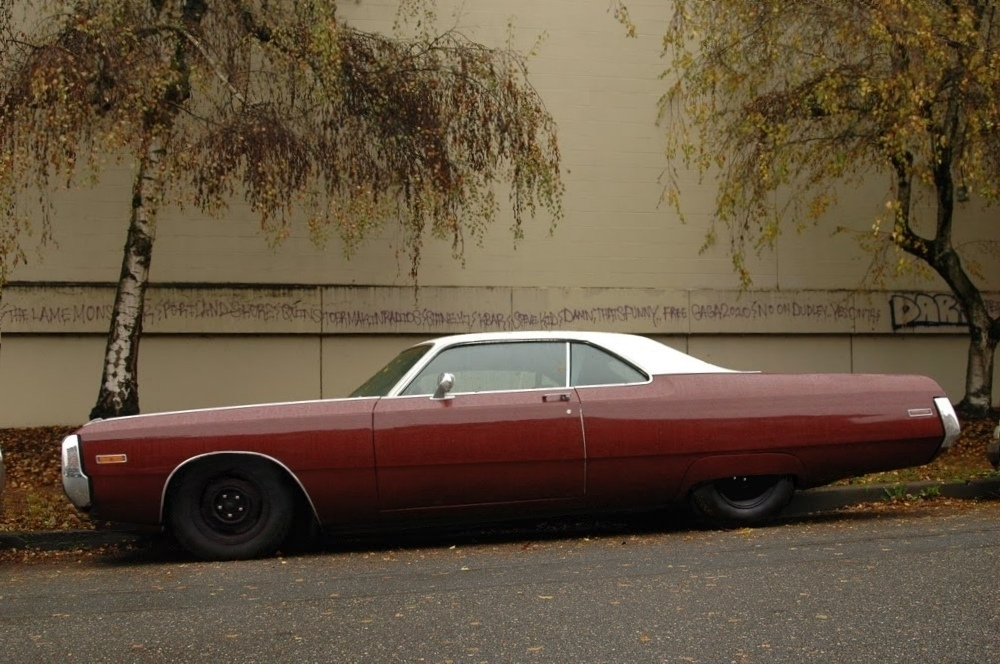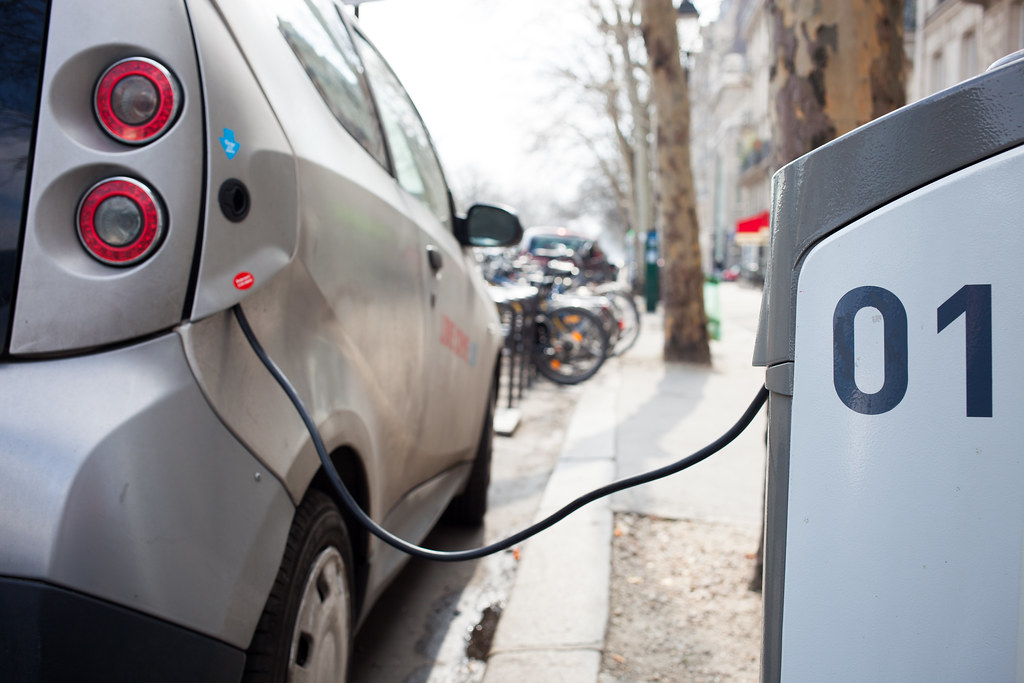
The electric vehicle market, for much of 2024, has been the subject of countless headlines proclaiming its “stalling” or “stumbling.” This narrative, while capturing elements of a tumultuous period, often oversimplifies a profound and chaotic transformation within the $3.5 trillion global car industry. Business as usual is unequivocally over, and the ripple effects are reshaping how we live, work, and commute every day.
Far from a simple deceleration, 2024 has emerged as a year of unprecedented reconfigurations. Established giants and ambitious newcomers are navigating a landscape defined by shifting consumer preferences, geopolitical tensions, technological races, and evolving regulatory environments. The early adopter phase has given way to a more discerning market, where factors beyond initial excitement—such as price, charging infrastructure, and long-term value—are gaining paramount importance.
This analysis delves into the pivotal trends and developments that have defined 2024, moving beyond sensational headlines to provide a grounded, data-driven perspective on why many brands that appeared to dominate in 2023 are now experiencing significant new pressures. We will examine the intricate dynamics at play, from the outsized influence of individual leaders to the strategic pivots of multinational corporations, offering insights into the complex forces that are shaping the future of mobility.

1. **Elon Musk’s Expanding Influence and Unaccountable Power**Elon Musk, CEO of Tesla, has cemented his status as perhaps the most controversial and powerful individual on Earth today. His immense wealth, primarily derived from his shares in Tesla, has directly translated into an unprecedented degree of political influence within the United States government. This growing power is further amplified by his control over a major social media network, X, alongside significant stakes in the American defense and space travel apparatus.
Within a span of months, Musk dramatically shifted his stance from vowing no political donations to directly engaging with President-elect Donald Trump at the White House. His financial contributions and the extensive reach of X significantly bolstered Trump’s campaign. This move also saw much of the Silicon Valley billionaire community follow his lead, effectively paving the way for a potential remaking of the American government to align with their financial interests. The longevity of this “uneasy alliance” with Trump’s base and other factions remains a critical variable for the coming year.
The foundation of this unparalleled influence rests squarely on Tesla and its sky-high stock price, which propelled Musk to become the wealthiest person globally. Yet, the question of whether he will genuinely prioritize electric cars—the very innovation that positioned him for such power—remains open. Regardless of one’s personal view, 2024 has underscored Musk and his associates as a new class of oligarchs, operating with seemingly limitless power and minimal accountability, a trajectory whose ultimate conclusion is yet unknown.
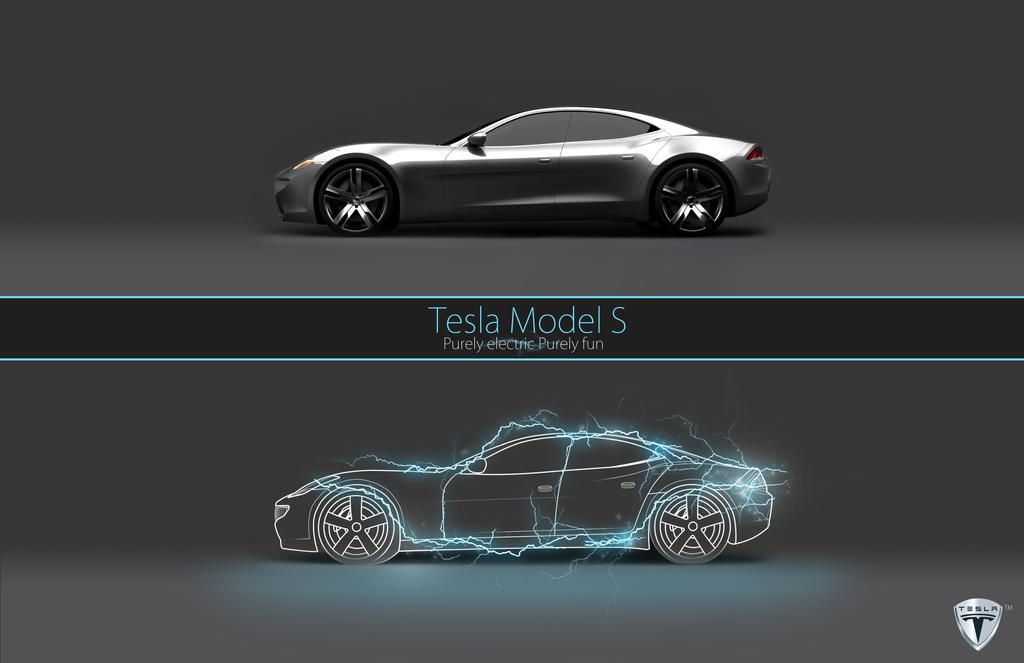
2. **Tesla’s Slipping Sales and the Intensifying Competitive Landscape**Despite Elon Musk’s escalating influence, 2024 has presented a less favorable picture for Tesla’s core automotive business. While the company retains its position as the leading seller of electric vehicles in the U.S., its sales figures are experiencing a decline. This deceleration is largely attributable to the aggressive entry of both traditional automakers and new players into the burgeoning EV sector.
Globally, Tesla has been dethroned as the top EV seller by China’s BYD, signaling a significant shift in market dynamics. The long-awaited Cybertruck finally made its market debut but has been plagued by continuous controversy, frequent recalls, and inconsistent sales performance. Furthermore, early indications from used car lots, where Cybertrucks are beginning to accumulate, suggest that initial consumer enthusiasm for the model may be short-lived.
Tesla’s stock valuation continues to be buoyed by the ambitious promise of “solving” fully self-driving cars, a prospect potentially favored by the evolving U.S. regulatory environment. However, the company’s “Robotaxi Day” event did not elicit the revolutionary impact of, for instance, the original iPhone launch. Significant uncertainty persists regarding Tesla’s commitment to—or even its continued interest in—developing more affordable EV models.
Promises centered around robotaxis may offer only limited sustained advantage. Should Tesla’s current lineup, which is showing signs of aging, continue to lose ground to increasingly formidable new competitors, the company’s perceived invincibility could diminish considerably. Recent data from Cox Automotive further illustrates this trend, showing Tesla’s U.S. EV market share dropping to 38 percent in August, the first time it fell below 40 percent since October 2017. This decline is viewed as structural, not merely seasonal, with overall EV sales in July increasing by 24 percent month-over-month while Tesla’s sales grew by only 7 percent.
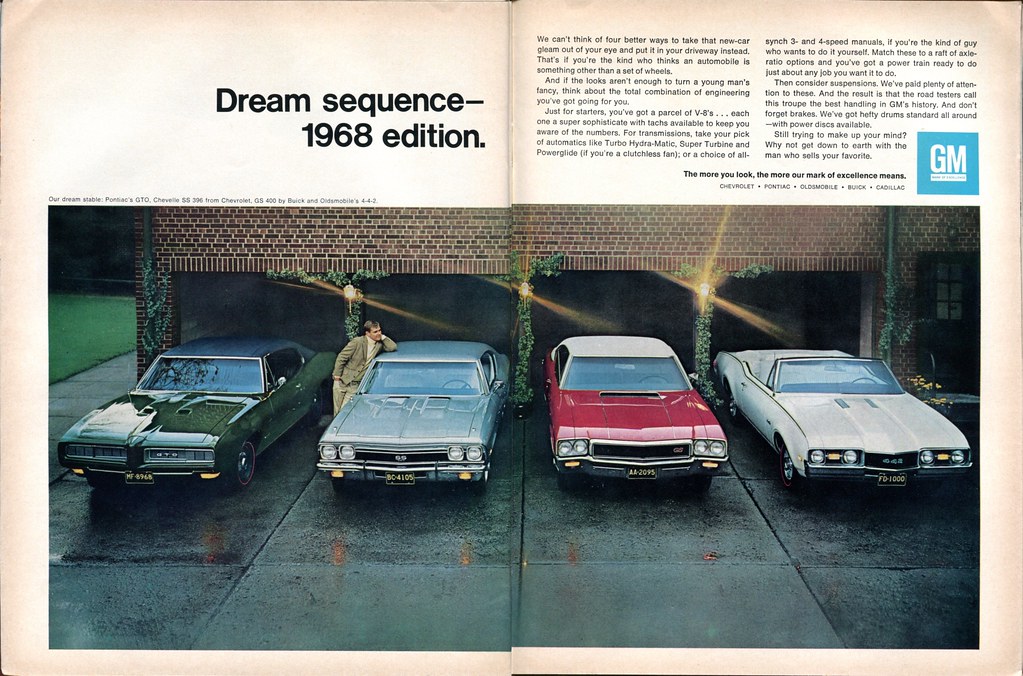
3. **General Motors and Hyundai’s Strategic Advancements and Market Gains**The idea that Tesla would eventually cede market share to other automakers was, perhaps, an inevitable outcome. In 2024, two legacy manufacturers, General Motors and South Korea’s Hyundai Motor Group, have notably excelled on the electric vehicle front. GM has orchestrated a remarkable turnaround following a challenging 2023, while Hyundai has transformed from an industry “also-ran” into a globally recognized leader in automotive technology.
For General Motors, this resurgence involved effectively resolving persistent software issues and launching an array of new electric models. Notable additions include the Chevy Silverado EV, GMC Sierra EV, the upcoming Cadillac Escalade IQ and Vistiq, and the critically acclaimed Chevy Equinox EV, which earned top honors in our inaugural Breakthrough Awards testing. The company also strategically recruited A-list talent to innovate in battery and software development, even amidst some unfortunate layoffs earlier in the year.
Hyundai, through its Hyundai, Kia, and Genesis brands, has maintained a steadfast commitment to accelerating its presence in the EV race throughout 2024. New electric models are consistently being introduced, with the NACS-equipped 2025 Ioniq 5 leading this charge. Remarkably, Hyundai is poised to soon offer more EV models compatible with Tesla’s North American Charging Standard (NACS) plug than Tesla itself.
Both General Motors and Hyundai have likely surpassed 100,000 electric vehicles sold in the U.S. this year alone, making them the first manufacturers since Tesla to reach this significant milestone. While the race for the coveted No. 2 spot is still unfolding, neither automaker should be underestimated as 2025 approaches. Their strategic moves and robust product pipelines position them as formidable competitors in the rapidly evolving EV market.
Read more about: The Electrified Horizon: 14 Game-Changing EVs Poised to Redefine the Automotive Industry in 2026

4. **The European Auto Industry’s Mounting Challenges**The situation in Europe’s automotive sector throughout 2024 has been stark, presenting a very tough year for the entire continent’s industry. Major players, including Volkswagen and Stellantis, are grappling with significant headwinds. Stellantis, in particular, faces a multitude of challenges both in Europe and domestically in the United States.
European electric vehicles are contending with uncertain consumer demand and persistent production delays. A significant concern is the increasing market share being captured by new entrants from China, intensifying competitive pressures. The overall new car market across Europe appears to have reached a plateau, further exacerbating the difficulties faced by manufacturers.
Compounding these issues are soaring labor costs and an overcapacity problem, with car factories designed to produce more vehicles than can currently be sold. Moreover, Europe’s once-promising battery industry is now described as being “on life support,” indicating a critical state. While not yet reaching the severity of “Great Recession Vibes,” the current economic climate in the European auto sector is beginning to evoke similar feelings of profound uncertainty and distress.
Read more about: A Deepening Divide: Trump’s Tariff Gambit and India’s Steadfast Stance on Russian Oil
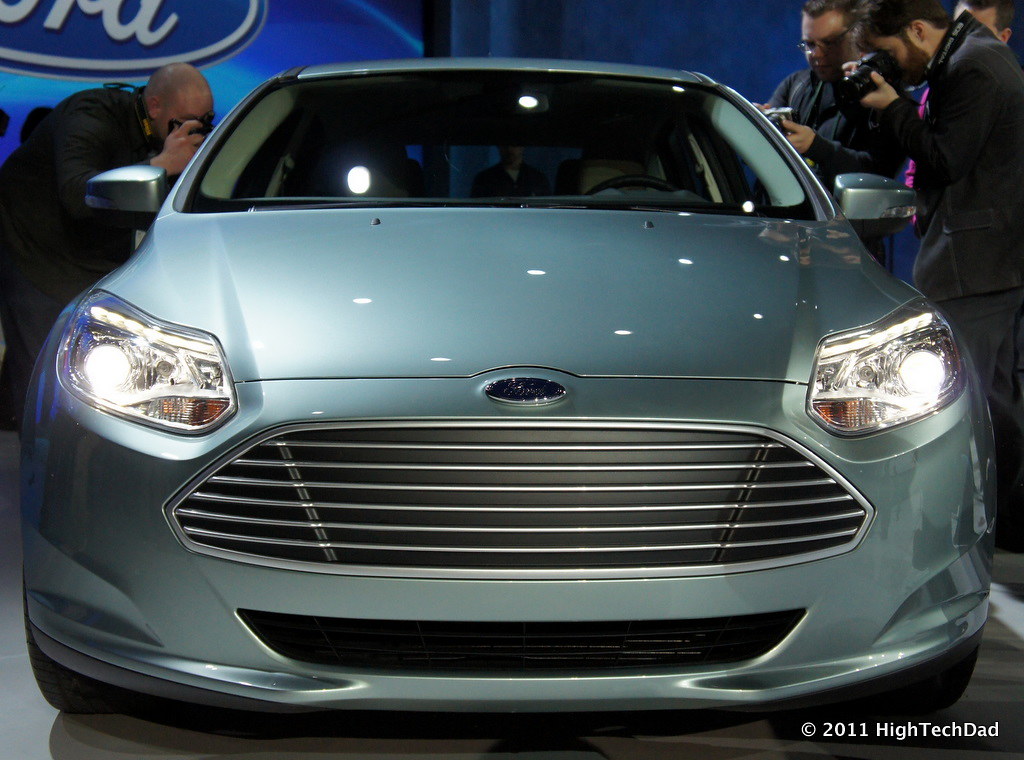
5. **Ford’s Strategic Re-evaluation and Delayed EV Rollouts**The trajectory of Ford’s electric vehicle strategy has undergone a significant reversal in just one year. Twelve months prior, Ford appeared to be a leader in the EV transition, boasting two of the market’s most popular electric vehicles—including the first electric pickup truck—and pioneering innovations such as the industry-wide adoption of Tesla’s NACS plug.
Despite these early successes, Ford was prompted to rethink its approach after confronting substantial losses within its EV division. The company recorded a loss of $4.7 billion on sales of 116,000 EVs last year, and sales figures failed to meet optimistic projections. Consequently, in August, Ford made the decision to cancel plans for a three-row electric SUV and postponed the launch of a quasi-successor to its Lightning until the latter half of 2027.
While Ford still maintains its “skunkworks” project, focused on a ground-up EV platform, vehicles from this initiative are not anticipated until the latter part of the current decade. In the interim, Ford is embarking on a calculated gamble, prioritizing an increase in hybrid offerings and banking on the electric vehicle market not fully gaining momentum until closer to 2030. This strategy, however, carries inherent risks, potentially leaving Ford trailing numerous rivals in the long run.
Ford CEO Jim Farley, reportedly an enthusiast of driving an imported Xiaomi SU7, seems to comprehend the fundamental shift required, acknowledging that the future is not simply “more gas F-Series variants.” Nevertheless, these strategic adjustments mean that Ford, an early pioneer in the electric vehicle space, will largely rely on its existing Lightning and Mustang Mach-E models for several more years. This cautious approach is a move that the company may ultimately come to regret in a rapidly accelerating competitive environment.
Car Model Information: 2021 INFINITI QX80 SENSORY
Name: Fourteenth-generation Ford F-Series (P702)
Caption: 2021 F-150 XL SuperCrew
Manufacturer: Ford Motor Company
Aka: Ford Lobo (Mexico)
Production: October 12, 2020 – present
ModelYears: 2021–present
Assembly: Claycomo, Missouri,Mickleham, Victoria
Designer: Raleigh Haire (2016)
Class: pickup truck
BodyStyle: regular cab,extended cab,crew cab
Layout: Front-engine, rear-wheel drive layout,Front-engine, four-wheel drive layout
Platform: Ford T platform#T3
Related: Unbulleted list
Engine: Unbulleted list
Motor: cvt,BorgWarner
Transmission: Ford-GM 10-speed automatic transmission,Manumatic,Automatic transmission
Drivetrain: Hybrid vehicle drivetrain#Power-split or series-parallel hybrid
Battery: val,Lithium-ion battery
Wheelbase: unbulleted list
Length: unbulleted list
Abbr: on
Width: unbulleted list
Height: unbulleted list
Weight: cvt
Predecessor: Ford F-Series (thirteenth generation)
Charging: Vehicle-to-grid
Categories: 2020s cars, All articles with unsourced statements, Articles with short description, Articles with unsourced statements from September 2023, Cars introduced in 2020
Summary: The fourteenth-generation Ford F-Series is a range of pickup trucks produced by Ford, introduced for the 2021 model year. This was the first generation to include a fully-electric and hybrid pickup truck among the offerings, with the F-150 Lightning EV having entered production in 2022. The F-150 is positioned above the mid-size Ranger but below the larger Super Duty in the Ford truck lineup.
Get more information about: Ford F-Series (fourteenth generation)
Buying a high-performing used car >>>
Brand: Ford Model: electric pickup truck
Price: $35,000 Mileage: 92,506 mi.
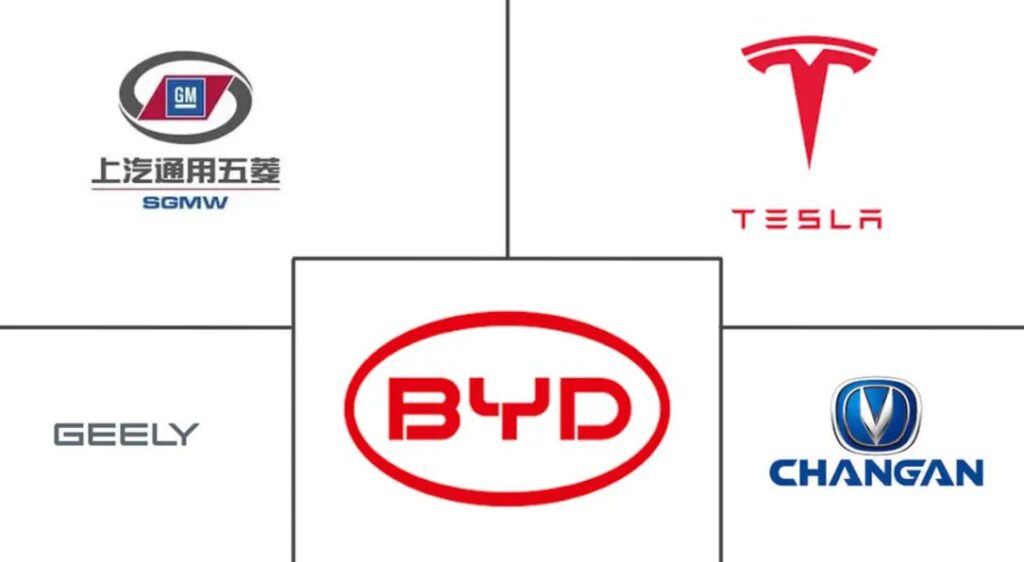
6. **The Rapid Ascent of Chinese EV Manufacturers**The names BYD, Nio, Xpeng, and Xiaomi were perhaps not widely recognized globally just a few years ago, or even a single year prior. However, their prominence has unequivocally surged, demanding the attention of the international automotive industry. As extensively reported throughout 2024, China’s automotive sector has issued a clear challenge to the rest of the world.
Chinese carmakers are demonstrating a remarkable capability to disrupt the global automotive landscape, potentially making even Tesla appear as a comparatively smaller player. Their competitive advantages span across multiple critical areas, from offering class-leading battery technology to developing some of the most advanced software solutions available in the industry. This holistic approach to EV development positions them strongly for future growth.
While the full impact of this ascendancy has not yet been entirely felt in the American market, consumers in Europe, Latin America, and other parts of Asia are already experiencing the breadth of China’s EV offerings. It is widely anticipated that the American market will soon witness the same extensive penetration, fundamentally altering the competitive dynamics for established domestic and international automakers. The strategic implications of this rise are profound and far-reaching.
Read more about: The PLA’s Ascent: Unpacking China’s High-Tech Military Modernization and Strategic Ambitions for a New Global Order
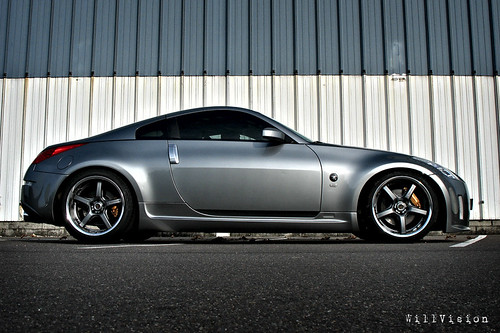
7. **Japan Inc.’s Complacency and Uncertain Merger Strategies**For much of recent history, Japan’s automotive industry was widely regarded as the global benchmark for quality and innovation. However, by late 2024, it has become increasingly difficult to sustain this assertion. The famously methodical and meticulous approach characteristic of Japanese automakers has proven ill-suited to the rapid pace of disruption emanating from Silicon Valley and China’s burgeoning tech sector. The initial signs of strain became unmistakably evident this year.
A multitude of factors contributed to Japanese automakers’ reluctance to embrace a pioneering role in the electric vehicle market. This conservative stance allowed them, for a time, to dismiss the successes of Tesla and others in the U.S. But now, losing ground to China is the ultimate wake-up call, highlighting the unsustainable nature of their previous strategy.
Toyota, while performing adequately with its hybrid vehicle offerings, cannot indefinitely postpone a full commitment to an electric future. A stark illustration of the industry’s dire predicament is the recently announced merger plan between Honda and Nissan. The fact that a successful and profitable entity like Honda has been called upon to potentially “rescue” Nissan, without a clear articulation of the merger’s mutual benefits, raises significant questions about its efficacy and rationale. Historical precedent suggests that mergers alone do not inherently resolve systemic issues, a lesson that Stellantis’s ongoing challenges continue to underscore.

8. **The Autonomy Race Heats Up**Two years ago, the autonomous driving sector appeared to falter, marked by the closure of Ford- and VW-backed Argo AI. This trend continued into 2024 with General Motors’ Cruise division ceasing robotaxi operations after high-profile safety mishaps. Such setbacks could lead one to believe autonomous driving may never truly materialize, especially after a decade of unfulfilled promises.
However, much like artificial intelligence, the internet, or indeed electric vehicles themselves, the autonomous vehicle journey involves an initial wave of intense hype, followed by a period where serious players settle in for long-term investment. This phase demands generations of sustained development. The developments of 2024 underscore that this critical race is far from over, remaining a central battleground for automotive innovation.
Tesla, for instance, anchors its future on robotaxis, a challenge making battery-powered cars seem simple by comparison. This vision largely underpins its high stock price. Yet, Tesla lags behind rivals like Google’s Waymo, Amazon’s Zoox, Aurora for trucking, and numerous Chinese firms. Traditional automakers also pursue incremental automated driving features, as seen in GM’s strategic shift post-Cruise.
It is possible that 2024 will be remembered as the year the pursuit of autonomous driving truly intensified. While enthusiasm is high, all contenders in this high-stakes race still have a considerable amount to prove before fully realizing their ambitious visions.
Read more about: China’s Unveiled Arsenal: A Deep Dive into New Weapons Reshaping Global Power Dynamics at the 2025 Military Parade
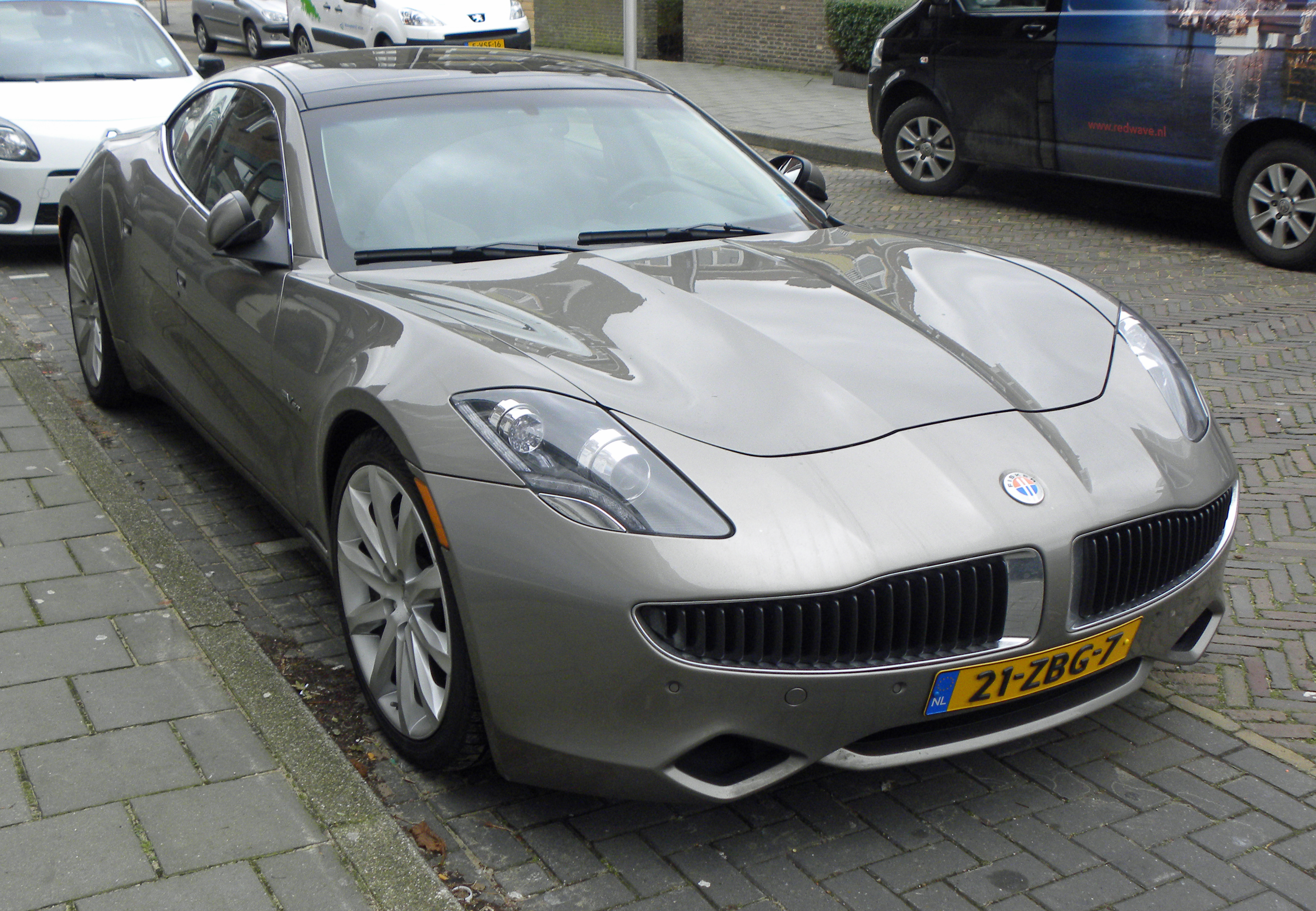
9. **Fisker Files For Bankruptcy: The End of an Era for EV Startups**The year 2024 distinctly marked the culmination of the frenzied EV startup boom. The era characterized by Special Purpose Acquisition Company (SPAC) explosions has definitively passed, giving way to a new financial landscape where interest rates are elevated and access to capital is considerably more challenging than it was in the 2010s. Furthermore, the intensifying competition from established automakers and the burgeoning influence of Chinese manufacturers now present an exceedingly formidable environment for new entrants.
In this challenging climate, the question looms: can a brand-new startup genuinely offer something uniquely meaningful to a market already crowded with innovative solutions? Sadly, Fisker Inc. ultimately demonstrated that it could not. Despite the potential for Fisker to emerge as a distinct software-driven vehicle with unique styling, allegations of mismanagement and a product that reportedly failed to meet expected standards led to its unfortunate demise.
Fisker’s bankruptcy serves as a stark early warning for the broader industry regarding the fate of software-powered cars when their parent companies cease operations. A critical question arises: do these advanced vehicles simply become “bricks on wheels” once their supporting infrastructure collapses, or can they still retain a viable future on the road? This event underscores the immense importance of not only innovative product development but also robust business management and sustained operational viability for any aspiring EV manufacturer.

10. **Volvo EX30 and the Geopolitical Winds of Tariffs**The compact and impressively affordable Volvo EX30 initially appeared to be a significant triumph in the U.S. market, mirroring its success across other global regions. This new model, with its promise of accessibility, generated considerable enthusiasm and seemed poised to make a substantial impact on electric vehicle adoption. It embodied the ideal blend of practical design and reasonable pricing.
However, the EX30, being manufactured in China, unfortunately became an emblematic casualty of the escalating trade tensions. The Biden administration’s decision to impose a substantial 100% tariff on electric vehicles produced in China directly impacted the EX30, leading Volvo to delay its highly anticipated U.S. release over the summer. While deliveries are now gradually resuming, their scale remains somewhat limited until Volvo can significantly ramp up its European production capabilities.
This situation positions the EX30 as a potent symbol of the pervasive uncertainty now confronting automakers worldwide. The global supply chain, intricately linked through components, batteries, and software originating from China, combined with volatile trade policies, has rendered the automotive industry far more intricate and challenging than ever before. With the political landscape in the U.S. facing potential shifts, particularly concerning future trade stances with China, the strategic implications for international automotive brands remain profoundly uncertain.
Car Model Information: 2025 Volvo EX30 Twin Motor Ultra
Name: Volvo EX30
Manufacturer: Volvo Cars
Production: 2023–present
ModelYears: ubl
Assembly: ubl
Class: Subcompact crossover SUV
BodyStyle: hatchback
Layout: ubl
Platform: Sustainable Experience Architecture platform
Related: ubl
Motor: permanent magnet synchronous
Battery: Lithium_iron_phosphate_battery
ElectricRange: unbulleted list
Wheelbase: cvt
Length: cvt
Width: cvt
Height: cvt
Weight: cvt
Predecessor: Volvo C30 DRIVe Electric
Categories: All-wheel-drive vehicles, Articles with short description, CS1 Brazilian Portuguese-language sources (pt-br), CS1 Dutch-language sources (nl), CS1 Turkish-language sources (tr)
Summary: The Volvo EX30 is a battery electric subcompact crossover SUV manufactured by Volvo Cars. Revealed in June 2023, the EX30 is the smallest Volvo vehicle currently on sale, positioned below the XC40 and C40 crossovers. It is produced in China and Belgium and is related to the Zeekr X and the Smart #1, which are similar in size and developed from Geely’s SEA platform. The vehicle is sold globally.
Get more information about: Volvo EX30
Buying a high-performing used car >>>
Brand: Volvo Model: EX30
Price: $45,700 Mileage: 1,377 mi.

11. **Rivian R3X Electrifies the Internet with its Debut**The unveiling of the Rivian R3X generated a level of excitement and public discussion not seen since the debut of Tesla’s Cybertruck. While the Cybertruck captured attention with its angular, brutalist, and somewhat post-apocalyptic aesthetic, the R3X presented a strikingly different, yet equally captivating, persona. It exuded a playful, joyous, and distinctly evocative classic rally car vibe that resonated deeply with a broad audience.
Initially intended as merely a secondary announcement during the reveal of the Rivian R2, the R3X, along with its slightly less audacious sibling, the R3, quickly commanded the spotlight at the California startup’s March event. These new models succeeded in elevating Rivian’s profile in ways that its updated, yet more expensive, R1 models had not quite achieved. Their distinct design and projected affordability instantly captured widespread imagination and garnered significant media attention.
The crucial question that now faces Rivian is whether these highly anticipated models can transition from concept to concrete reality, hitting the roads both on schedule and at their promised price points. The successful execution of these launches is unequivocally vital to Rivian’s long-term survival and its ability to establish a firm foothold in an increasingly competitive electric vehicle market. The industry will be watching closely to see if Rivian can convert this initial internet buzz into sustainable commercial success.

12. **Lucid Motors Navigates the Perilous ‘Valley of Death’**Lucid Motors currently stands as a manufacturer of what is arguably the most efficient—and in many critical respects, the overall best—electric vehicle available on the market today. Its flagship model, the Lucid Air, consistently demonstrates cutting-edge technology and exceptional performance. However, the company faces a significant challenge: relatively few consumers are purchasing this singular model, as the market for expensive luxury sedans appears to be shrinking with each passing year, losing favor to other vehicle segments.
To counter this, Lucid concluded 2024 with the commencement of the first production run for its new Gravity SUV, an immensely important model that is poised to be a pivotal factor in the company’s future. The Gravity needs to become a substantial sales success, acting as a critical bridge until Lucid can realize its own “Tesla Model Y” moment with the introduction of its more affordable Project Midsize models. This strategic expansion is essential for broadening its market appeal and achieving higher sales volumes.
Indeed, 2025 is shaping up to be a make-or-break year for Lucid. Despite possessing some of the most impressive electric vehicle technology in the business, the company must effectively translate its engineering prowess into compelling market traction and robust sales performance. Successfully navigating this period, often referred to as the “valley of death” for startups, will determine whether Lucid solidifies its position as a major player or struggles to sustain its operations.
Car Model Information: 2022 Lucid Air Grand Touring
Name: Lucid Air
Caption: 2022 Lucid Air Grand Touring in Zenith Red
Manufacturer: Lucid Motors
Production: September 2021 – present
ModelYears: 2022–present
Assembly: Casa Grande, Arizona
Designer: Derek Jenkins
Class: Executive car
BodyStyle: Sedan (automobile)
Layout: unbulleted list
Related: Lucid Gravity
Transmission: One-speed fixed gear
Powerout: cvt
Battery: kWh,Lithium-ion battery
ElectricRange: cvt
Charging: unbulleted list
Wheelbase: 2960 mm
Order: flip
Abbr: on
Length: 4975 mm
Width: 1939 mm
Height: 1410 mm
Weight: convert
Sp: us
Categories: All-wheel-drive vehicles, All Wikipedia articles written in American English, All articles containing potentially dated statements, All articles with unsourced statements, Articles containing potentially dated statements from 2021
Summary: The Lucid Air is a battery electric four-door luxury sedan made by Lucid Motors. The car was announced in December 2016 and sold starting in 2021.
The Dream Edition’s EPA range is estimated at 520 miles (840 km), the longest on the market as of 2024. The production model was unveiled in September 2020, and production began in late 2021.
In November 2020, the Lucid Air Pure was announced with 406 miles (653 km) of projected range and 480 horsepower (360 kW) and a starting price of US$77,400. The range of trim levels includes Pure, Touring, Grand Touring, and Dream Edition.
On September 28, 2021, Lucid Motors announced that production had begun, with the base Pure model expected in late 2022. Deliveries commenced on October 30, 2021, with the first reservation holders taking delivery of Air Dream Editions in an event in California.
Get more information about: Lucid Air
Buying a high-performing used car >>>
Brand: Lucid Model: Air
Price: $53,990 Mileage: 47,845 mi.
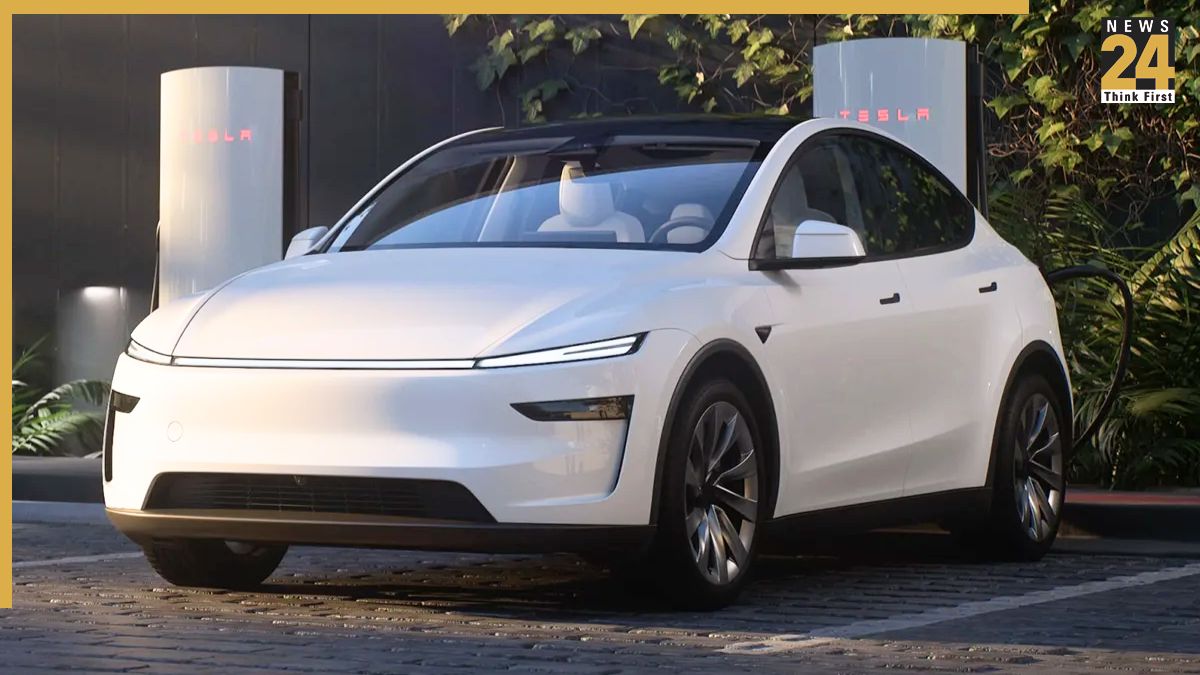
13. **The Tesla NACS Transition and a Resurgent Charging Infrastructure**The integration of Tesla’s Supercharger network and its North American Charging Standard (NACS) plug into the broader automotive industry represents a transformative moment. This widespread adoption is poised to be a game-changer for long-distance road trips and significantly alleviate the prevalent “range anxiety” among electric vehicle owners. While this transition will not resolve every challenge facing EV charging, it promises a substantial upgrade for current owners of non-Tesla electric vehicles, offering greater convenience and accessibility.
The critical responsibility now rests with Tesla to ensure its charging network not only continues to expand but also maintains the same high levels of reliability and user-friendliness for which it has become renowned. Concerns were raised earlier in the year following Elon Musk’s unexpected layoffs within the charging team, prompting industry-wide pause, though many of those positions were subsequently rehired. The pivotal question for 2025 is whether Tesla remains committed to being the charging powerhouse it once was, or if Musk’s increasing focus on AI and robotaxis will divert resources and attention away from this vital infrastructure.
Concurrently, the charging sector demonstrated remarkable improvements throughout 2024, surpassing many initial expectations. Companies like Electrify America and ChargePoint have significantly elevated their service quality, while new players such as Ionna are enhancing the charging experience. Furthermore, innovative approaches, exemplified by companies like Brooklyn’s Itselectric, are beginning to redefine how and where electric vehicles can be charged. Although the entire charging industry is still in its nascent stages, it made tremendous strides this past year, building a stronger foundation for future growth.
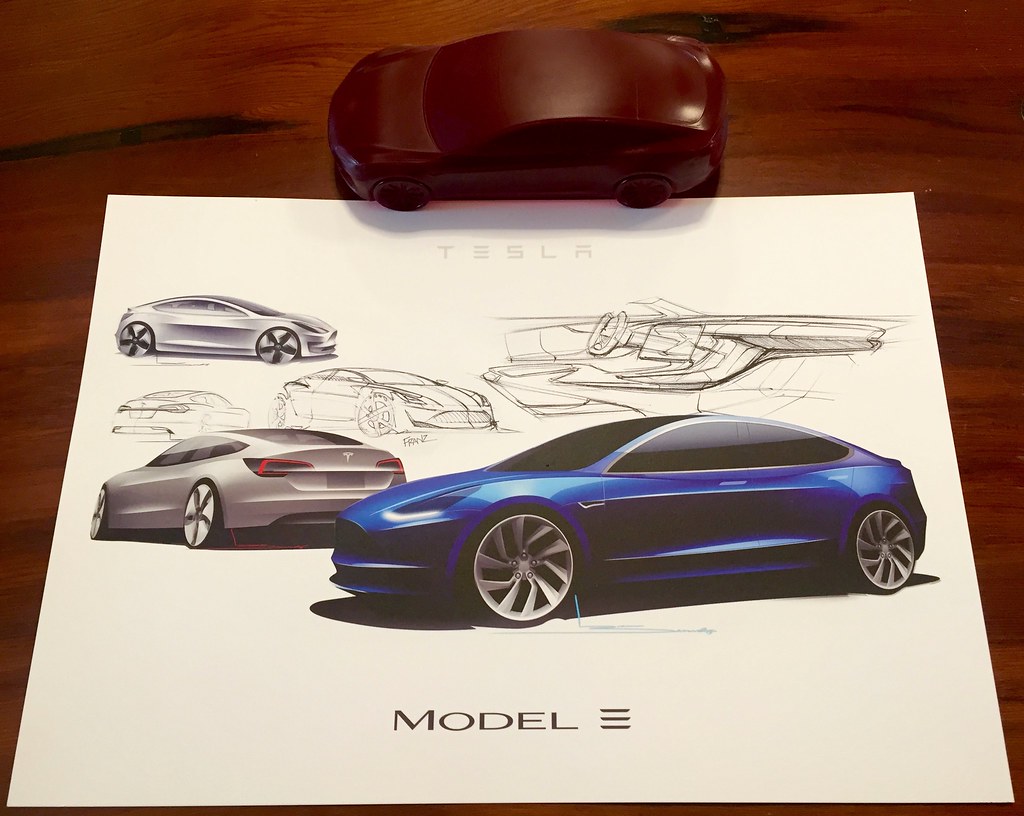
14. **EV Sales Rise, Fueled by Deals, Yet Shadowed by Depreciation**Despite headlines suggesting a market “stalling,” 2024 saw excellent global electric vehicle sales. These now account for 10% of new car sales in the U.S., 25% in California, nearly 20% in Europe, and 50% in China. This sustained growth establishes EVs as the fastest-growing new car segment.
Much U.S. sales momentum stemmed from ultra-affordable lease deals, leveraging an Inflation Reduction Act loophole providing a $7,500 federal tax credit for leased EVs. Almost 80% of new EVs this year were leased, highlighting this pathway’s dominance. However, the long-term sustainability of these incentives is concerning, given costs absorbed by automakers.
Depreciation remains a significant problem for EV owners, with Tesla’s price cuts dragging down resale values across the market. Recent Q1 2024 data shows U.S. EV purchases increased by 2.6% year-over-year, slower than previous surges. Tesla’s market share declined to 51.3% in Q1 from 61.7%, with its U.S. sales falling by 13.3% year-over-year. The average transaction price for a new EV dropped 9.0% to $55,167, driven by Tesla’s 13.5% price cuts and mirroring incentives from other manufacturers.
Consumers consistently cite price, range, and charging infrastructure as key barriers. The average EV price ($56,520 in July) still significantly exceeds gas-powered vehicles ($48,401). New research indicates older EVs depreciate faster, though newer models show improved value retention. The market is clearly in a complex, “messy middle” phase.

15. **The EV Transition Confronts the Trump 2.0 Era**The ambitious trajectory of the American electric vehicle market has largely been shaped by the Biden administration’s aggressive climate goals and supportive policies. However, the political landscape is poised for a dramatic shift with the potential arrival of a new White House administration holding polar-opposite policies. This introduces profound uncertainty for future EV momentum.
Key questions arise: will vital tax credits and manufacturing incentives for EVs survive this new political era? A potential rollback could encourage automakers to pivot back towards gas-powered vehicles, leaving them vulnerable to China’s EV surge. Elon Musk’s conspicuous political associations earlier in the year, particularly with President Donald Trump, reportedly alienated segments of Tesla’s traditionally environmentally-minded consumer base.
This political dynamic will be the defining narrative of 2025 for the EV industry. Advocates hope politicians in states benefiting from EV manufacturing investments can lobby the incoming administration against backtracking. While Musk projected optimism for Tesla’s future production under favorable government measures, industry observers caution that Tesla’s actual production lags installed capacity. Achieving ambitious targets requires full utilization of existing facilities and ramping up programs like the Semi truck and Cybercab.
The coming months are critical. Federal tax credits, which fueled EV demand, are set to expire by September’s end. Analysts predict Tesla, with its reliance on discounts, could face greater pressure. While Musk champions ambitious robotics and AI, these remain untested revenue sources. Tesla’s challenge is sustaining automotive leadership long enough for these future bets to mature commercially.
Read more about: Tensions Erupt in Lincoln: Congressman Mike Flood Confronts Hostile Crowd on Trump’s Landmark Legislation and Broader Administration Policies
As 2024 draws to a close, the electric vehicle industry stands at a profound inflection point. It is a period marked by intense competition, rapid technological evolution, and significant geopolitical shifts, far removed from any simplistic narrative of mere “stalling.” The market has entered a “messy middle,” demanding strategic agility from manufacturers and nuanced understanding from policymakers and consumers alike. The tension between long-term innovation and immediate market realities will define the next chapter, determining which players emerge stronger and whether the ambitious vision of an electrified future accelerates or encounters further turbulence. The automotive world is undeniably in flux, and the journey through 2025 promises to be as frenzied and transformative as the year just past.



